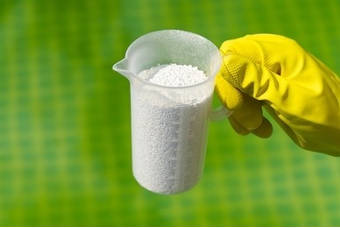The water environment of rivers, lakes, and various reservoirs is eutrophic to different degrees. In addition to the deterioration of water quality and changes in taste and smell, the biggest potential threat of eutrophication is the presence of certain dominant algae in eutrophic water bodies, which can produce hepatotoxins, neurotoxins, skin irritants, or other toxins that endanger human health.

There are multiple methods to manage eutrophication in water bodies, which can be divided into three major categories, such as physical, biological, and biochemical, including high-pressure algae removal, ultrasonic, electrocatalysis, mixed coagulation air flotation, modified clay algae removal, phosphorus locking agents, and highly effective microbial agents. To achieve a better algae removal, Lifeasible has established a comparison and optimization of programs for algae removal in the water environment for our customers.
Lifeasible uses a professional algae analysis platform to analyze the quantity and distribution characteristics of algae in the water. Based on the accurate analysis results combined with appropriate simulation experiments to analyze and evaluate the algae removal effect of different treatment processes, various pre-oxidants, and the impact on algae removal characteristics, and finally, come up with the optimal algae removal solution and process for the customer in a specific water environment.
| Methods | Features |
| Algae removal by coagulation | This method not only removes algae directly but also removes phosphate from the water and cuts off the nutrient source for algae growth. Therefore Lifeasible can verify the effect of reaction time, coagulant dosage, and pH on algae removal through orthogonal tests to determine the optimal process conditions for phosphorus and algae removal by coagulation and sedimentation. |
| Modified clay algae removal | To address the shortcomings of natural clay for algae removal, researchers have changed the surface condition of clay particles (such as diatomaceous earth, laterite, bentonite, montmorillonite, etc.) by chemical or physical means to improve their adsorption performance and algae killing effect. This method has the advantages of low cost and no pollution, but, at present, there are multiple reagents added to the modified clay with different effects, while Lifeasible can seek the best ratio of modified algae removal materials through analysis and simulation experiments, and then get the best solution for algae flocculation efficiency. |
| Micro-flocculation for direct filtration and algae removal | Direct filtration generally refers to direct filtration by micro-flocculation, i.e., adding certain flocculants to the raw water and controlling certain hydraulic conditions to form micro flocs in the water, which are then removed by filtration. Lifeasible can analyze the characteristics of algae in the water and simulate experiments, and then combine different hydraulic conditions to determine the amount and time of flocculant input to achieve the optimal algae removal effect. |
Lifeasible offers the comparison, optimization, and evaluation of algae removal solutions in aqueous environments, which not only saves the client time and project investment and allows you to get the optimal solution for algae removal in a specific aqueous environment in a short period, but we can also perform a detailed and comprehensive analysis of the water body to ensure that the results you get are reproducible and informative. Please contact our staff for details of the solutions we can develop for you.
Lifeasible has established a one-stop service platform for plants. In addition to obtaining customized solutions for plant genetic engineering, customers can also conduct follow-up analysis and research on plants through our analysis platform. The analytical services we provide include but are not limited to the following:
STU-CRISPR System Improves Plant Genome Editing Efficiency
April 19, 2024
Application of Exosomes in Facial Beauty
April 12, 2024